Blog Post Ideas for Food Bloggers and Businesses
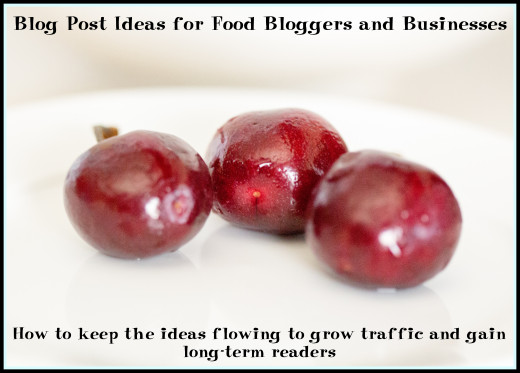
Are you in the early stages of starting your own food blog? Have you been blogging for a while and are beginning to burn out on creating new content? Running a blog requires generating high quality engaging content on a regular basis. For food bloggers, it can be overwhelming to develop new recipes and share them in an interesting manner two or three times a week. While new recipes are critical for the success of your blog, there are quite a few ways to make them meaningful and relevant for your readers. There are also lots of other types of posts that are applicable for your blog that can mix up the routine, which will keep your readers interested and prevent you from burning out.
- Foodblogging : Dos and Don'ts : delicious:days
Comprehensive resource for new and veteran food bloggers alike. - My Top 20 Food Blogging Tips For Beginners - Savory Simple
Are you a new food blogger? Here are some my top food blogging tips to help you get started.
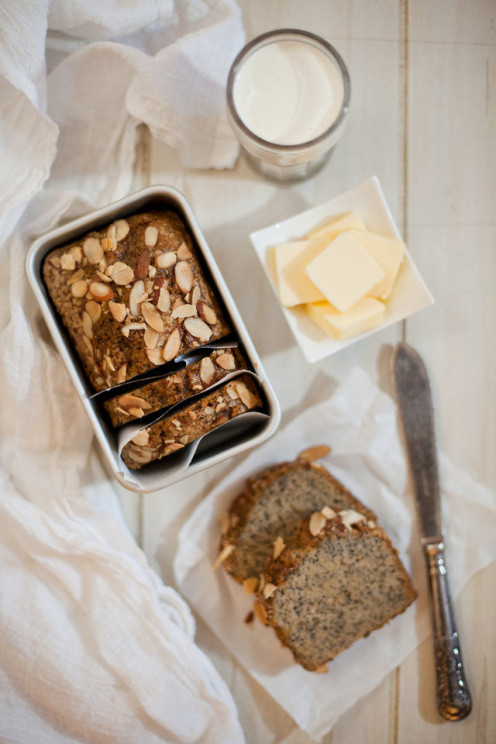
Tell a story
Nothing makes people remember a concept like a story. Think about how your readers will be able to relate to the recipe. For example, maybe you have a funny story about the first time that you make this dish for a family get together. Most likely some of your readers will have similar experiences and will smile when they read your tale. Make sure that the story is relevant to the recipe at hand.
- Recipe: Creamy Avocado Lassi — Drink Recipes from The Kitchn | The Kitchn
Michelle Peters-Jones shares a great story about growing up in India with a prolific avocado tree in her avocado lassi recipe post.
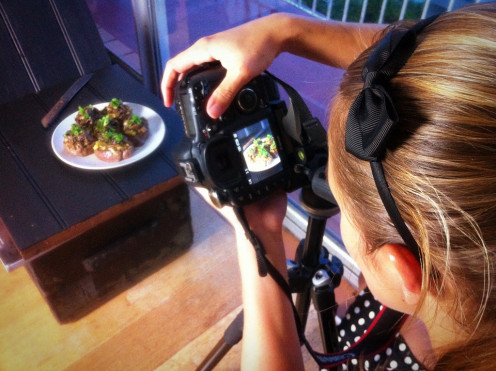
Share behind the scenes information
One reason that people enjoy reading food blogs is that they love learning more about the process. What does your kitchen look like? Do you have common set ups that you use for documenting your recipes? Don't feel like you need to have a professional level kitchen, advanced photography gear, or expensive props to be able to share behind the scenes details with your readers. Remember that most of them are working in small and average sized apartment and home kitchens with basic gear. It will reassure them to learn that you are working in similar conditions.
- Behind The Scenes Of A Food Blogger - Confessions of a Cooking Diva
Link up with 20 behind the scenes posts from food bloggers.

Write personal posts
It can be scary to move beyond your comfort topic (i.e. food, DIY projects) and talk about yourself. However, readers love to learn more about the person behind some of their favorite recipes. A personal post doesn't have to reveal all of your deepest secrets. Think about putting together a photo post of your family after a long weekend or sharing some of your personal inspiration for developing new recipes.
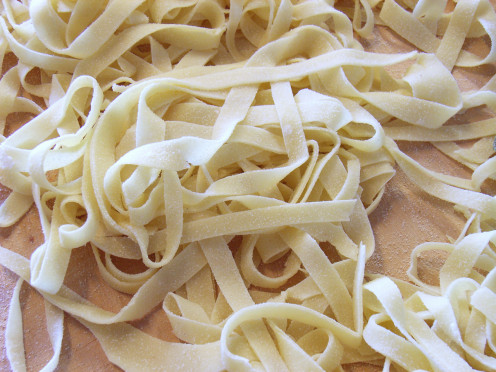
Share your insight / expertise about food related topics
Instead of sharing a new recipe, think about tackling a single aspect of food, such as making the perfect pizza crust or your tips for hosting large family events. Start with your personal areas of expertise. As you develop a blog, you may get commonly asked reader questions that you can use for future posts. For example, if people always want to know more about the homemade pasta that you use for your lasagna recipes, think about creating a separate post about the pasta.
- 20 Easy Upside-Down Cake Recipes
These 20 upside-down cake recipes aren't like your grandmother's pineapple one. These use all sorts of fruits, adding a new twist to an old favorite. Photos and step by step instructions provided.
How to Eat Healthy While Traveling - Interview with a Raw Food Blogger
Conduct an interview
Do you have a favorite food blogger whom you'd like to get to know a little better? Do you want to bring some expertise to your blog that you cannot provide yourself? Interviews provide insight for readers and can be a nice change from the regular routine. Make sure that you interview an individual who will provide relevant content for your readers. For example, if you cater to moms looking for simple weeknight dinners, interviewing a gourmet chef not be very beneficial.
- Peanut Butter Macaroons
Guest blogger Christy shared a delicious cookie recipe on Sweet Treats and More while Kristy was moving. - How To Write A Guest Blog Post: Top 19 tips to getting your message out | Make Film Teach Film
Bring in a guest blogger
Many food bloggers bring in guest bloggers when their lives get busy (i.e. having a baby, moving) or when they're going to be out of town for an extended period of time. A post or two from a guest blogger who makes recipes that fit with your blog can be a great way to keep your traffic going when you're not able to maintain your regular blogging routine. Of course you can invite a guest blogger to write a post simply for a change of pace or to share a specific recipe as well.

- How to Make Cake Pops: Easy Summer Recipes
Are you looking for cake pop recipes to make this summer? There are many easy recipes to make with cake mix and frosting from watermelon to BBQ grills.
Address current trends
Even when you don't feel inspired to create your own recipes for the latest food trends, you can still write about them on your blog. Discuss the trend, highlight some of your favorite recipes or ideas for it, and maybe share a few tips.
Chicago's Best Steak #2: Tom's Steak House
Write a top 10 list
Top 10 lists are popular with readers. The format is easy to read and skim, and the number in the headline will drive a higher response. Top 10 lists also tend to do better in email campaigns and reach more readers via Facebook and Twitter. They may seem cliché, but there is no denying that they are effective. Keep a running list of possible top 10 list ideas so that you don't have trouble finding one or two new ones to write each month.
- Kitchen Tips and Video Tutorials | Mel's Kitchen Café Video
Watch cooking videos online for easy tips and tricks that will help you be a rock star in the kitchen!
Make a video
If you usually write recipes in text form, a video can be a great way to grab readers' attention. Does the idea of filming an entire recipe overwhelm you? Start with a shorter segment in which you simply talk about the recipe or you share your kids enjoying the freshly prepared dish. You can also use a video format to share personal information, a tour of your kitchen, or cooking tips.
- Tips for Making How-To Videos | Community | Food Blogger Pro
- Coaching Tips for your Food Blog Video from a TV Professional
Foodie Friday - Performance Coaching Tips for your Food Blog Video from a TV Professional
- Immersion Hand Blender Recipes: Pureed Soups, Smoothies, and More
Immersion hand blenders are inexpensive, versatile kitchen appliances. They can be used for pureed soups, dips, dressings, sauces, baby food, smoothies, desserts, and more.
Talk about the products / brands that you love
Most likely you do this to some extent in your recipe posts already. For example, if you frequently post cookie recipes, you may have discussed your favorite brand of parchment paper or type of baking pans. Your readers may find it beneficial to have separate posts to refer back to with this type of content.
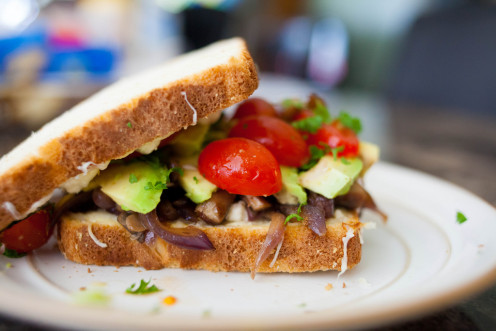
Put together a best of post
Many people put together best of posts at the end of the year, such as the most popular recipes or my favorite recipes of 2013. Think about writing best of posts for various occasions throughout the year as well such as Fourth of July drinks and Mother's Day brunch ideas. You can pull from your own recipes and/or pull from other favorite blogs. If you include recipes from other blogs, make sure that you give credit where credit is due.
- 2013 Recipe Disasters | How Sweet It Is
Well. I just titled this "2014 recipe disasters," so that should give you an idea of how wrecked 2013 was. Lots of recipes failed SO many times in 2013 that I added a year onto my life.
Share your fails
It is easy to assume that successful food bloggers never mistakes because everything that they publish is beautiful and polished. The truth is that they have quite a few failed recipes each year and that they take numerous photos and write multiple drafts of each post to get great content that they feel is worthy of publishing. Don't be afraid to share your mistakes once in a while. It makes everyone feel better.
- What Should Food Bloggers Write About? - Pinch of Yum
What should food bloggers write about? A post with ideas and inspiration from several food bloggers for an unusual writing niche. - 10 Food Blog Posts That'll Get You Traffic - Amateur Gourmet
- 10 Blog Post Ideas for Your Food Business | Gredio | Discover How to Start and Grow Your Food Busine
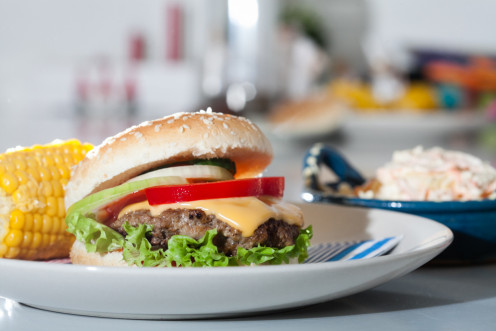
How to Take STUNNING Food Pictures - Food Photography Tips - SGNL by Sony
- Tasty Food Photography eBook - Pinch of Yum
A great affordable resource for beginner to experienced food bloggers and everyone in between! - Food Photography Tips for Food Bloggers - Cookie and Kate
Tips on how to take appetizing food photos, how to choose the right camera and lenses for you, links to further food photography resources and more.
Tips
- Share beautiful photos. The bottom line is that you have to make your food look appealing to grow your blog. Most successful food bloggers are not professional photographers and have gotten where they are today with lots of practice and patience. Start where you are and build from there.
- Invest in photography gear and supplies (i.e. photo props). You don't need to spend a fortune on your blog all at once, especially when you're just getting started. Prioritize your needs and invest as you can. As you grow your traffic and earnings, the gear will pay for itself.
- Don't forget to make it about the food. It can be so easy getting caught up in story telling that you don't actually give much information about the recipe itself. Tell readers why the recipe is so great (i.e. the convenience, the unique combination of flavors).
- Do your research. If you aren't sure about information that you want to include in your post, look it up and include your references. Readers don't expect you to be an expert in every food topic, but they do expect accurate, current information.
- Be authentic. No one wants to read phony content. Develop your own blogging voice and stick to it. For example, if you feel most natural writing in a funny, casual manner, go with it.
- Craft Blogs: How to Start and Maintain Successful Blogs For Craft Businesses
This article is about how to start and maintain successful blogs for craft businesses. It includes blogging platform information as well as ideas for blog posts, features, and topics. - 101 Blog Topic Ideas for Moms
Great content ideas for blogs by moms. Ideas for titles and for making your blog memorable and creative. - How To Make Money Blogging: An Interview With Janine Huldie
If you are interested in making money as a blogger then this article is a must-read.
© 2014 Rose Clearfield










